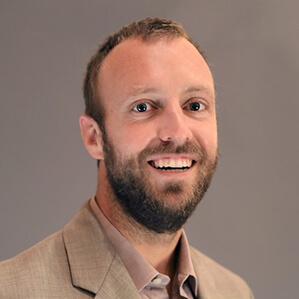Post-program outcomes for students are obviously huge indicators of success and primary metrics for measuring medium and long-term outcomes and impacts. EvaluATE’s 2019 revised Advanced Technological Education (ATE) Annual Survey states, “ATE program stakeholders would like to know more about post-program outcomes for students.” It lists the types of data sought:
-
- Job placement
- Salary
- Employer satisfaction
- Pursuit of additional STEM education
- Acquisition of industry certifications or licenses
The survey also asks for the sources used to collect this data, giving the following choices:
-
- Institutional research office
- Survey of former students
- Local economic data
- Personal outreach to former students
- State longitudinal data systems
- Other (describe)
This blog introduces an “Other” data source: LinkedIn Alumni Tool (LAT).
LAT is data rich and free, yet underutilized. Each alumni’s professional information is readily available (i.e., no permissions process for the researcher) and personally updated. The information is also remarkably accurate, because the open-visibility and network effects help ensure honesty. These factors make LAT a great tool for quick health checks and an alternative to contacting each person and requesting this same information.
Even better, LinkedIn is a single tool that is useful for evaluators, principal investigators, instructors, and students. For example, a couple years ago Kevin, Principal Investigator for the Regional Center for Nuclear Education and Training (RCNET) and I (RCNET’s evaluator) realized that our respective work was leading us to use the same tool — LinkedIn — and that we should co-develop our strategies for connecting and communicating with students and alumni on this medium. Kevin uses it to help RCNET’s partner colleges to communicate opportunities (jobs, internships, scholarships, continued education) and develop soft skills (professional presentation, networking, awareness of industry news). I use it to glean information about students’ educational and professional experiences leading up to and during their programs and to track their paths and outcomes after graduation. LinkedIn is also a user-centric tool for students that — rather than ceasing to be useful after graduation — actually becomes more useful.
When I conducted a longitudinal study of RCNET’s graduates across the county over the preceding eight years, I used LinkedIn for two purposes: triangulation and connecting with alumni via another channel, because after college many students change their email addresses and telephone numbers. More than 30 percent of the alumni who responded were reached via LinkedIn, as their contact information on file with the colleges had since changed.
Using LAT, I viewed their current and former employers, job positions, promotions, locations, skills, and further education (and there were insignificant differences between what alumni reported on the survey and interview and what was on their LinkedIn profiles). That is, three of the five post-program outcomes for students of interest to ATE program stakeholders (plus a lot more) can be seen for many alumni via LinkedIn.
Visit https://university.linkedin.com/higher-ed-professionals for short videos about how to use the LinkedIn Alumni Tool and many others. Many of the videos take an institutional perspective, but here is a tip on how to pinpoint program-specific students and alumni. Find your college’s page, click Alumni, and type your program’s name in the search bar. This will filter the results only to the people in your program. It’s that simple.

Except where noted, all content on this website is licensed under a Creative Commons Attribution-NonCommercial-ShareAlike 4.0 International License.






 EvaluATE is supported by the National Science Foundation under grant numbers 0802245, 1204683, 1600992, and 1841783. Any opinions, findings, and conclusions or recommendations expressed on this site are those of the authors and do not necessarily reflect the views of the National Science Foundation.
EvaluATE is supported by the National Science Foundation under grant numbers 0802245, 1204683, 1600992, and 1841783. Any opinions, findings, and conclusions or recommendations expressed on this site are those of the authors and do not necessarily reflect the views of the National Science Foundation.